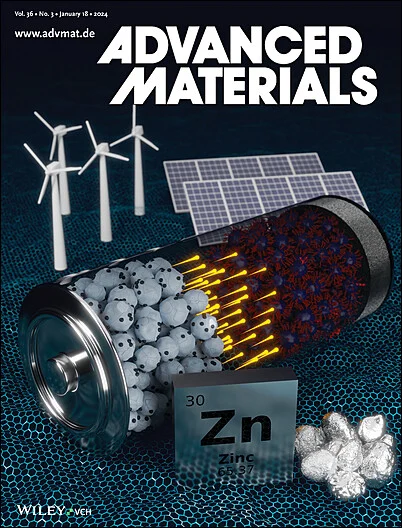一般的预锂化方法和相应的全电池设计。
IF 26.8
1区 材料科学
Q1 CHEMISTRY, MULTIDISCIPLINARY
引用次数: 0
摘要
预锂化技术被广泛认为是提高锂离子电池能量密度和延长循环寿命的有效策略。预锂化的原理是引入额外的活性锂离子,从而补偿初始充电和长期循环过程中的锂离子损失。然而,目前对各种预锂化方法的总结主要集中在液体lib上,对固态lib的评论有限。与液态锂离子电池相比,固态锂离子电池不仅面临着预锂化过程中活性物质与锂源混合不均匀造成的均匀性问题,而且还面临着刚性固-固界面接触带来的严峻动力学挑战。本文首先综合了各种预锂化技术,系统地介绍了全电池中各组分预锂化与其电化学性能之间的动态关系。此外,本文还讨论了固态lib预锂化技术在固-固界面和Li+输运方面面临的挑战。最后,这些预锂化技术有望推广到其他预金属化剂的设计中,从而指导高能、高安全储能系统的发展。本文章由计算机程序翻译,如有差异,请以英文原文为准。
General Prelithiation Approaches and the Corresponding Full Cell Design.
Prelithiation technology is widely regarded as an effective strategy to enhance the energy density and extend the cycle life of lithium-ion batteries (LIBs). The principle of prelithiation is to introduce additional active Li+, thereby compensating for Li losses during initial charging and long-term cycling. However, the current summaries of various prelithiation approaches are predominantly focused on liquid LIBs, with limited reviews available on solid-state LIBs. Compared to liquid LIBs, solid-state LIBs not only face uniformity issues caused by the uneven mixing of active materials and Li sources during prelithiation, but also encounter severe kinetic challenges arising from rigid solid-solid interface contact. Here, various prelithiation techniques are first integrated and the dynamic correlation between the prelithiation of each component in a full cell and its electrochemical performance is systematically introduced. Furthermore, the challenges of prelithiation techniques in solid-state LIBs in terms of solid-solid interface and Li+ transport are discussed. Finally, these prelithiation technologies are expected to be extended to the design of other premetallation agents, which guide the development of high-energy and high-safety energy storage systems.
求助全文
通过发布文献求助,成功后即可免费获取论文全文。
去求助
来源期刊

Advanced Materials
工程技术-材料科学:综合
CiteScore
43.00
自引率
4.10%
发文量
2182
审稿时长
2 months
期刊介绍:
Advanced Materials, one of the world's most prestigious journals and the foundation of the Advanced portfolio, is the home of choice for best-in-class materials science for more than 30 years. Following this fast-growing and interdisciplinary field, we are considering and publishing the most important discoveries on any and all materials from materials scientists, chemists, physicists, engineers as well as health and life scientists and bringing you the latest results and trends in modern materials-related research every week.
 求助内容:
求助内容: 应助结果提醒方式:
应助结果提醒方式:


